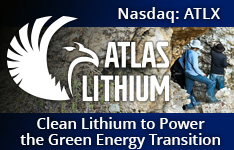The Life Sciences Report: What's the macro environment for biotech right now?
Chen Lin: Biotech is red hot. The scene reminds me of the excitement around Internet stocks in the late 1990s, when the possibilities for growth seemed endless. Citigroup Inc. is reporting that curing cancer will be a trillion-dollar opportunity. We are on the edge of a major breakthrough in cancer research. In five to 10 years, as the Baby Boomers age, cancer may be treated as an ordinary disease.
TLSR: Are we looking for a magic bullet for all cancers, or should investors be concentrating on individual cancers?
CL: The industry focus is on treating individual cancers, although the molecular mechanisms are similar for most cancers. For example, the breakthrough in chimeric antigen receptors (CAR) T cells is very effective against liquid types of cancer. It worked for Emily Whitehead, a young girl who was diagnosed with an incurable disease, acute lymphoblastic leukemia (ALL), and given a few months to live. She has lived for four or five years since treatment, and everything looks fine. These genetic engineering technologies use a patient's immune system—his or her own T cells—to identify and kill cancer cells. Selective killing is a vast improvement over chemotherapy, which blasts good cells alongside the bad cells.
TLSR: What indicators in the macro environment predict the profitability of life science stocks?
CL: Central banks around the world are printing money that goes into speculations. Biotech is a stock picker's market. Even if there is another financial crisis, many biotechs will remain well funded as they move through their FDA approval processes. The aging of the population will continue, of course.
TLSR: Which biotechs on your scorecard are best positioned for the future?
"My advice is to try to take biotech profits when you can by trading around your position."
CL: A month ago, Sarepta Therapeutics Inc. (SRPT:NASDAQ) was one of my losers, but it had a huge breakout on May 19, after a meeting with the FDA that allowed the company to file an NDA (new drug application). The company is now well funded, with $160 million ($160M) in cash. It has enough money to complete FDA approval for eteplirsen (AVI-4658), which treats Duchenne muscular dystrophy (DMD) with an RNA-based platform using the exon-skipping model. If the approval is withheld, Sarepta will have to raise money for more trials, of course. Frankly, the company has been struggling with the FDA's criticism of its eteplirsen trial.
TLSR: What are the FDA's concerns?
CL: The problem is that DMD is a very rare disease and there are not a lot of patients available for conducting trials. Sarepta's trial has only 12 kids. Two kids dropped out in the beginning of the trial, which has raised some procedural issues. But the other kids are doing extremely well on the medication. Biopsies show that dystrophin is being produced in their bodies, which is a very significant indicator of efficacy. That makes Sarepta's medication better than that of its competitor, BioMarin Pharmaceuticals Inc. (BMRN:NASDAQ). The FDA advisory panel will look deeper into the trial later this year. I believe the outcome will likely be favorable to Sarepta. In the meantime, this stock is one of the most heavily shorted biotechs.
TLSR: Does Sarepta have other RNA-based products besides eteplirsen?
CL: Sarepta is testing antivirals for Marburg virus and influenza. Those tests are funded by the Department of Defense for bioterrorism applications. But there are quite a few different types of DMD, and Sarepta is mainly focused on developing its exon-skipping platform for that disease. The hope is that if eteplirsen is approved, then a series of other exon-skipping applications will be easier to approve. The technique could take over the whole market.
TLSR: Has Sarepta been performing up to your expectations?
CL: Before the recent meeting with the FDA, I had my doubts on whether the agency would allow eteplirsen to get to the next level. The good news that the compound would advance to the advisory committee level came out after the market had closed for the day; I was shocked with excitement. I wrote a special edition for my newsletter after 5 p.m. so that my subscribers could buy. Sarepta was trading at $21–22/share in the afterhours. Today, it is a still good buy at $25/share.
TLSR: What has accounted for the volatility in Sarepta's share price, which has fluctuated between $11/share and $55/share over the last 18 months?
"In five to 10 years, as the Baby Boomers age, cancer may be treated as an ordinary disease."
CL: It was hugely volatile because the stock was heavily shorted. The reason for the shorting was the FDA's previous doubts about the effectiveness of eteplirsen. That broke a lot of people who were long on the stock; although my position survived the downturn. And now there is a very good chance of seeing positive advisory committee results by the end of 2015, and an accelerated FDA approval in 2016. As the matter of fact, Sarepta probably has better chance to succeed now than when it was trading at $50/share. I predict a $100/share price within two years if the company gets approval later this year or in early 2016. Sarepta has a strong balance sheet, and even if, in a worse-case scenario, it needs to do another Phase 3 trial, eteplirsen could be approved in 2017.
TLSR: Is Sarepta going to be a target for an acquisition, or will it develop the product on its own?
CL: Sarepta is developing the drug technology on its own, but a competitor, Prosensa Holding N.V., was taken over by BioMarin. If the price is high enough, Sarepta could be taken over before the approval of eteplirsen, but my assessment is that after approval, the company will go to the market. Of course, it could eventually be taken over at a premium because big pharma recognizes the potential of eteplirsen.
TLSR: Who else is doing well on your scorecard?
CL: I was very fortunate to get involved in PlasmaTech Biopharmaceuticals Inc. (PTBI:NASDAQ) earlier this year. At that time, the stock was trading at around $3/share. I also bought the $5 warrant trading around $1. The stock has appreciated significantly. I sold much of my stock for a profit, but I kept my sizable warrant position.
If you look at PlasmaTech's share history, it went down in the past few years from $40–50/share (split-adjusted) to $3/share. The old shareholders were dramatically diluted. But the company made some very important decisions last year. It acquired new plasma technology as well as a company called Abeona Therapeutics Inc. for rare diseases. PlasmaTech now has a very promising drug against mucopolysaccharidosis III types A and B (MPS III, or Sanfilippo syndrome), which result from a rare and incurable genetic deficiency. PlasmaTech has about $30M in cash. It just raised money at $8/share. And because it does not need a lot of cash for a clinical trial, PlasmaTech is well funded for the next couple of years.
TLSR: Is the drug intended to cure MPS IIIA and MPS IIIB, or to alleviate symptoms?
CL: It is intended to completely cure MPS IIIA, as well as MPS IIIB, with a single dose! PlasmaTech is meeting with the FDA this summer, very soon. Then it will do a very simple trial.
TLSR: When you say it will be a simple trial, what does that mean?
CL: Right now, the model is extremely promising in mice. PlasmaTech will enroll 6-12 patients for a human Phase 1/2 trial for both MPS IIIA and MPS IIIB. Results will become available later this year. The cure only takes one injection, which is basically a miracle. MPS III is a very deadly disease, and the drug is so promising that all of the MPS III foundations are strongly supporting the trial.
"Biotech is a stock picker's market."
It is important to note that the plasma industry is a billion-dollar industry and is still using a 70-year-old technology. PlasmaTech's patented alpha-1 process can revolutionize the plasma industry. Its "fractionation" process produces 10 times more yield than the existing technology.
So you can see PlasmaTech is not a "one-trick pony." Successes in either rare diseases or plasma can set the share price on fire. I also want to point out both MPS IIIA and MPS IIIB received the orphan drug and rare pediatric disease designations. Recently a similar Rare Pediatric Disease Priority Review Voucher was sold for $245M cash to Sanofi. Compare that with the market cap of PlasmaTech, and you can see why I am still holding my shares and warrants after the recent huge run-up.
TLSR: PlasmaTech has a large accumulated deficit. Does that worry you?
CL: That deficit occurred because PlasmaTech was researching other drugs. At the end of last year, the company did a huge reverse split and, as I mentioned, most of the previous shareholders were wiped out. The company was basically a shell—the accumulated deficit means that it will not need to pay taxes for a long time. PlasmaTech is tiny, with a market cap at around $200M. But it has two very large targets—the cure for MPS IIIA and MPS IIIB and revolutionizing the $1.5 billion ($1.5B) plasma space. If only one of these ventures is successful, PlasmaTech stock has huge upside. The stock exploded in the past couple of months, and I did very well selling some of my positions. At one point, the warrant appreciated sixfold, but I strongly believe the stock has a lot of upside left.
TLSR: What other companies are hitting home runs for you?
CL: I got into Sorrento Therapeutics Inc. (SRNE:NASDAQ) at $5/share and discussed it last year on your report when it was trading at around $4/share. It is now trading at $13-14/share, but from a valuation point of view it has better value than last year because the company made huge advances in its programs.
The trial of Sorrento's next-generation cancer therapy, Cynviloq (paclitaxel nanoparticle polymeric micelle), was a tremendous success. Sorrento has entered an agreement with NantPharma LLC (private; owned by billionaire Dr. Patrick Soon-Shiong), which will acquire rights to Cynviloq for $90M upfront and $1.2B in future milestones and sales. There is little risk that Cynviloq won't be approved by the FDA. It is widely used in Asia—from Korea to India. It could be approved as a bioequivalent, or the FDA could require more trials. But it has already finished phase 3 trials in Asia. It will get approved one day; it's only a matter of time.
TLSR: Cynviloq's applications are for breast cancer, pancreatic cancer, bladder cancer and ovarian cancer. How is it able to treat so many different kinds of cancers?
CL: There was a big news story many years ago about Abraxane (paclitaxel protein-bound), which was acquired by Celgene Corp. (CELG:NASDAQ) for $3B. Cynviloq is a better version of Abraxane, which is a blockbuster drug. Dr. Patrick Soon-Shiong, the same person who sold Abraxane to Celgene, bought the rights to Cynviloq. Cynviloq has a longer patent life than Abraxane. It is the third generation of Taxol (paclitaxel), and it is very effective against cancer cells.
"Selective killing using a patient's immune system is a vast improvement over chemotherapy."
Sorrento's molecule is much smaller than Abraxane, which means it can be administered at a higher dose for easier penetration. From my perspective, the drug is worth $1.2B. Putting an appropriate discount cash flow model on Sorrento shows that the company is worth a lot more than its current stock price. The bottom line is that Sorrento has a $493M market cap. It has cash of $150M, and a drug worth $1.2B.
TSLR: How is Sorrento different from its competitors?
CL: Sorrento is leading the research in the targeted killing of cancer cells. To selectively kill cancer cells, scientists need to establish a good antibody library, and Sorrento's library is one of the best in the industry. Using the library, researchers are able to design and construct CARs, and attach them to T cells or NK (neukoplast) cells for cancer treatments. Attaching these CARs to T cells or NK cells helps these cells home in on cancer cells, and thus makes them more effective at targeting and killing cancer cells. While CAR T cells have shown very promising clinical activity in blood or liquid cancers, I understand that Sorrento's CAR-TNKs (chimeric antigen receptor tumor-attacking neukoplasts) may be better at treating solid tumors, which are much more common.
A dozen billion-dollar companies, including Juno Therapeutics (JUNO:NASDAQ) and Kite Pharma (KITE:NASDAQ) are developing CAR-T cell therapies. There are only two companies in CAR-TNK, Sorrento and a private company called Conkwest Inc. Each one owns 50% because there are intellectual patent protections. Sorrento is undervalued already, considering Cynviloq, but it has huge upside with CAR-TNK. Plus, it can license its antibody library at a large profit.
TLSR: Are there any other companies you want to talk about today?
CL: I was very fortunate to buy Spectral Medical Inc. (EDT:TSX; EDTXF:OTCQX) before the stock shot up recently. It has a potential treatment for sepsis. There is no cure for this disease. This is another drug with a low risk. It has already been approved in Japan and Europe, and it has been used in over 100,000 cases with strong evidence of benefit. Basically, the therapy reduces the chance of people dying by at least 30%. Spectral needs to enroll enough patients in trials to show a statistical difference from other treatments, and those results should be out next year. I own a relatively small position in this stock, as I already booked very nice profits. As the sepsis drug gets closer to approval, I will revisit it, gladly.
TLSR: Any parting words, Chen?
CL: On any given day, any biotech stock can be cut in half. That can happen due to an FDA response, or a decision, or bad data. My advice is to try to take your profits when you can by trading around your position.
TLSR: That sounds like good advice. Thanks.
Chen Lin writes the popular stock newsletter What Is Chen Buying? What Is Chen Selling?, published and distributed by Taylor Hard Money Advisors, Inc. While a doctoral candidate in aeronautical engineering at Princeton, Lin found his investment strategies were so profitable that he put his Ph.D. on the back burner. He employs a value-oriented approach and often demonstrates excellent market timing due to his exceptional technical analysis.
Want to read more Life Sciences Report interviews like this? Sign up for our free e-newsletter, and you'll learn when new articles have been published. To see a list of recent interviews with industry analysts and commentators, visit our Streetwise Interviews page.
DISCLOSURE:
1) Peter Byrne conducted this interview for Streetwise Reports LLC, publisher of The Gold Report, The Energy Report and The Life Sciences Report, and provides services to Streetwise Reports as an independent contractor. He or his family own shares of the following companies mentioned in this interview: None.
2) The following companies mentioned in the interview are sponsors of Streetwise Reports: None. The companies mentioned in this interview were not involved in any aspect of the interview preparation or post-interview editing so the expert could speak independently about the sector. Streetwise Reports does not accept stock in exchange for its services.
3) Chen Lin: I own, or my family owns, shares of the following companies mentioned in this interview: Sarepta Therapeutics Inc., Sorrento Therapeutics Inc., PlasmaTech Biopharmaceuticals Inc., and Spectral Medical Inc. I personally am, or my family is, paid by the following companies mentioned in this interview: None. My company has a financial relationship with the following companies mentioned in this interview: None. I was not paid by Streetwise Reports for participating in this interview. Comments and opinions expressed are my own comments and opinions. I determined and had final say over which companies would be included in the interview based on my research, understanding of the sector and interview theme. I had the opportunity to review the interview for accuracy as of the date of the interview and am responsible for the content of the interview.
4) Interviews are edited for clarity. Streetwise Reports does not make editorial comments or change experts' statements without their consent.
5) The interview does not constitute investment advice. Each reader is encouraged to consult with his or her individual financial professional and any action a reader takes as a result of information presented here is his or her own responsibility. By opening this page, each reader accepts and agrees to Streetwise Reports' terms of use and full legal disclaimer.
6) From time to time, Streetwise Reports LLC and its directors, officers, employees or members of their families, as well as persons interviewed for articles and interviews on the site, may have a long or short position in securities mentioned. Directors, officers, employees or members of their families are prohibited from making purchases and/or sales of those securities in the open market or otherwise during the up-to-four-week interval from the time of the interview until after it publishes.











































